Summary
Climate warming will increase production risks in agriculture due to thermophilic insects and will have significant economic implications and challenges for sustainable crop production. Additionally, the mandatory application of the principles of Integrated Pest Management (Principle 2: Monitoring by means of Prognosis and Monitoring, Directive 2009/128/EC) and the drastically decreased availability of plant protection products in recent years require precise and efficient pest forecasting for a timely and targeted control with suitable intervention measures. Up to now, there are no comprehensive studies on the expected risks from thermophilic insect pests already occurring in Austria for regional crop production systems under regionalized climate scenarios (OEKS15 scenarios).
The present project therefore aims to assess upcoming risks from an array of major representative insect pests already occurring in Austria in a changing climate under crop production conditions, considering regional aspects and high spatial resolution of agricultural land use. In specific, RIMPEST will investigate systematically for the first time the weather-related risks of 10 of the most important insect pest species for key crops for Austrian crop production, using modelling approaches for prediction their phenology, spatial occurrence and abundance under current and future climate in Austrian crop production regions. Long-term monitoring data from standardized forecasting observations for integrated pest management will be used to assess pest risks either with existing pest models already calibrated for Austria, or with existing pest models, which still have to be calibrated with data from Austria or with new pest models. The results of the project will provide locally representative and species specific information for adaptation strategies in crop protection with regard to long term crop planning (e.g. potential future growing areas and modified crop rotations patterns), adapted breeding strategies and crop management and protection strategies needed to mitigate long term risks at various levels (from local farmers to policy). For the different stakeholder groups background information and accessible research data as well as training materials about improved or new forecasting options and decision support systems for insect pest control as part of different crop production scenarios under changing climate will be (made) available.
The target pests include three grapevine pests - the European grape berry moth (Eupoecilia ambiguella), the European grape vine moth (Lobesia botrana), the American grapevine leafhopper (Scaphoideus titanus) vector of the epidemic Grapevine flavescence doree (GFD) phytoplasma-, two fruit pests - the codling moth (Cydia pomonella) and the plum fruit moth (Grapholita funebrana) and six arable and vegetable crop pests - the European corn borer (Ostrinia nubilalis), the Common European cockchafer (Melolontha melolontha), the Western corn root worm (Diabrotica virgifera virgifera), wireworms (Agriotes sp.) the cotton bollworm (Helicoverpa armigera) and the nanovirus transmitting aphid species Aphis fabae, Acyrthosiphon pisum and Myzus persicae.
The European grape berry/grape vine moths:
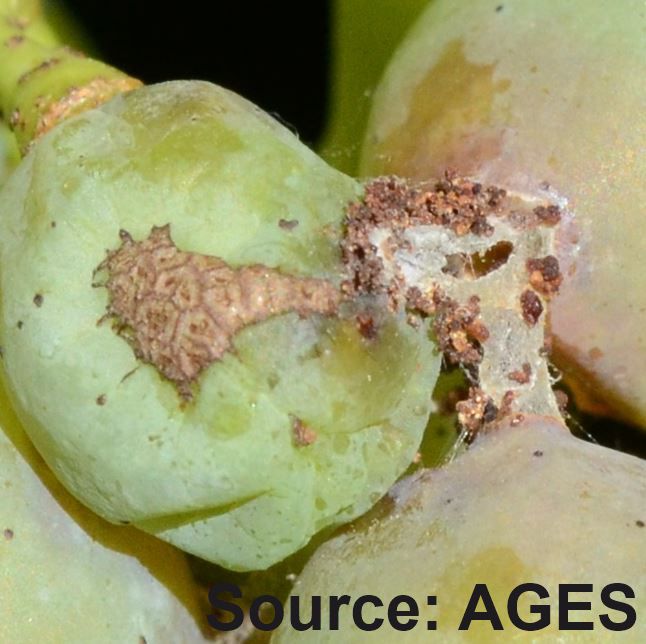
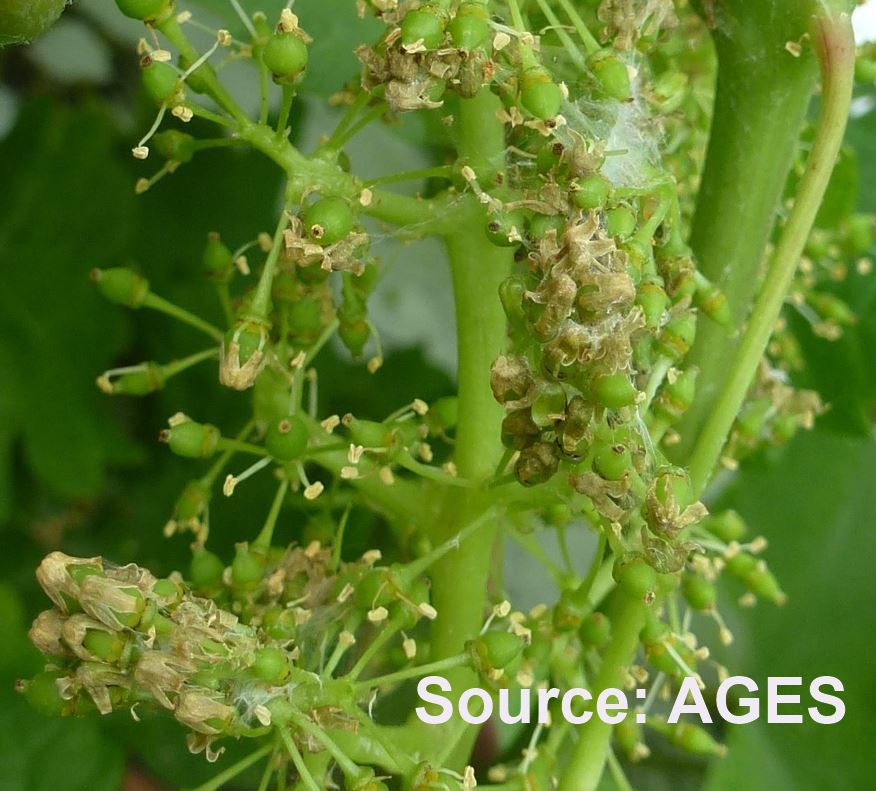
belong to the most relevant arthropod pests in viticulture in the Palaearctic Region, including Austria. Both pest species can cause substantial quantitative and qualitative losses if more than 3-5% of the grapes are infested. Both species occur in Austria under current climate conditions usually with two, but weather dependent also with three generations per year.
The American grapevine leafhopper:
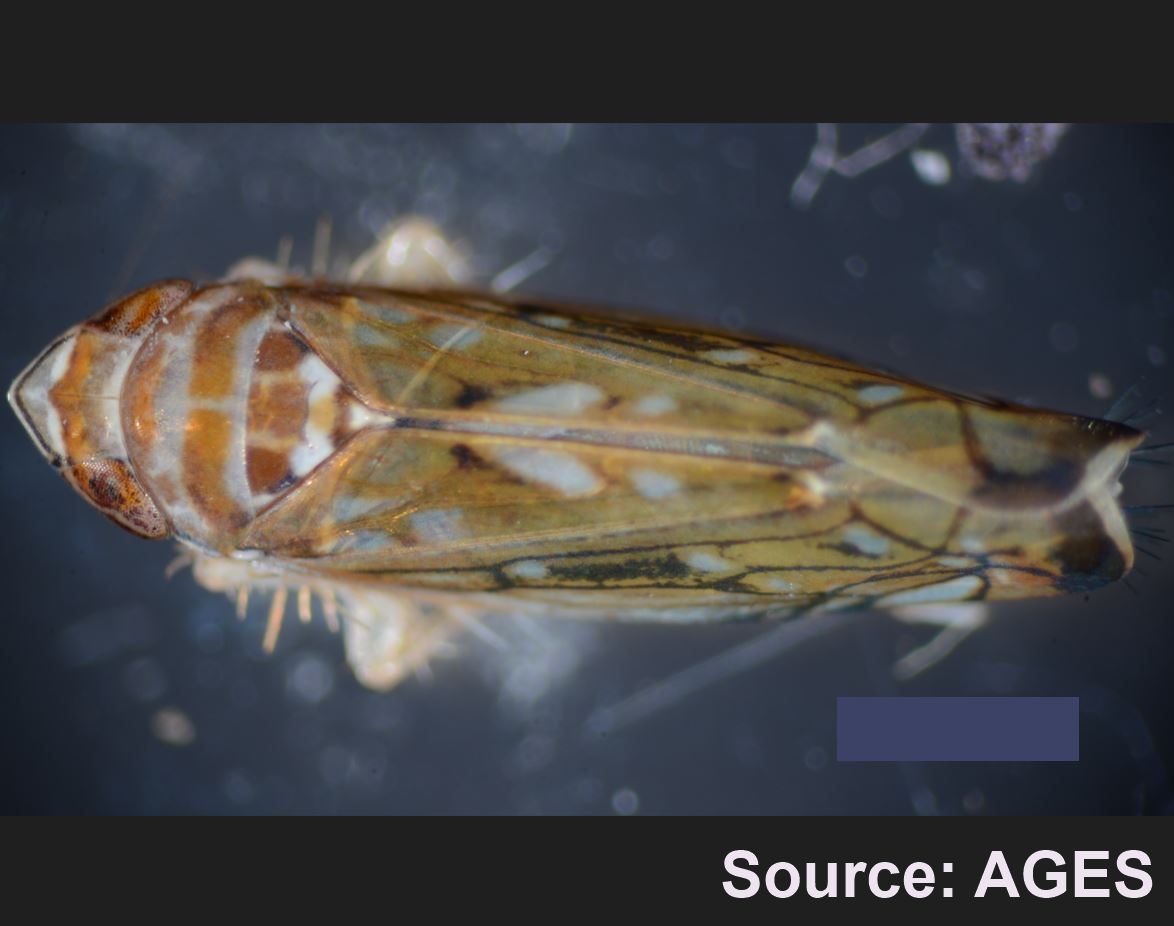
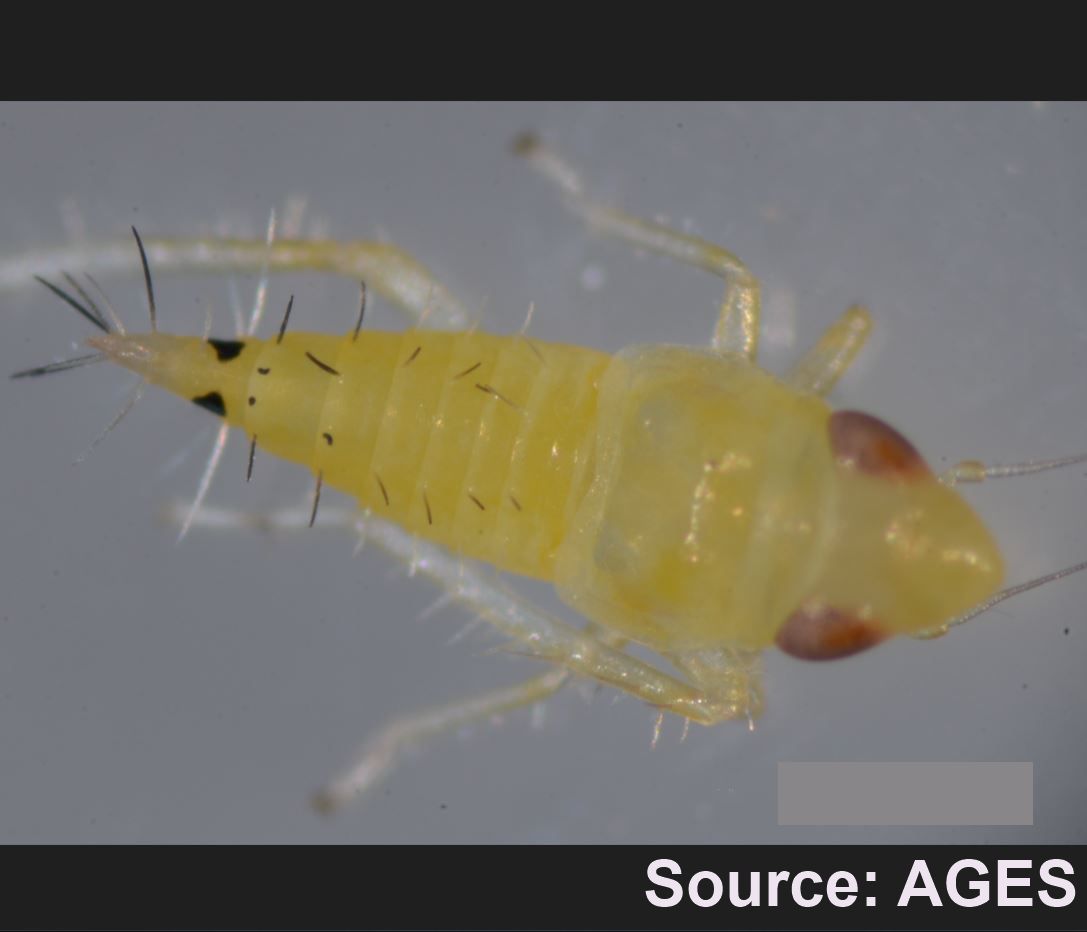
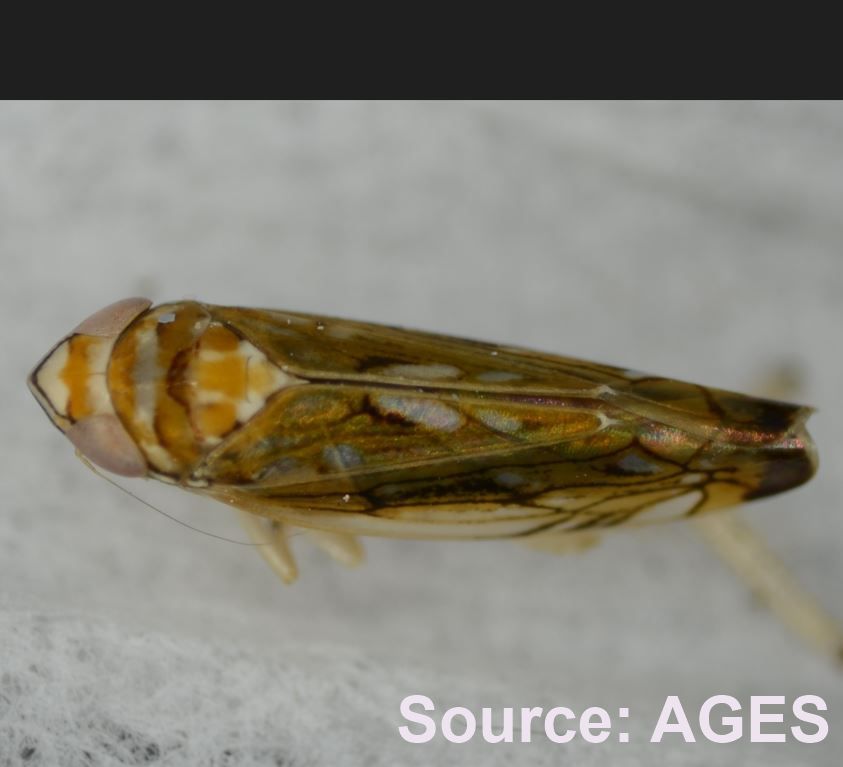
is an invasive cicadellid to Europe (first observed in Austria in 2004) is the vector of the Grapevine flavescence doree (GFD) phytoplasma, a quarantine organism in the EU (EC 2016/2031) (EUR-Lex, 2020). GFD which is considered as one of the most important epidemic diseases in European viticulture, can cause severe reduction in quality and quantity of the grapes and can finally lead to the dieback of whole plants.
The codling moth:
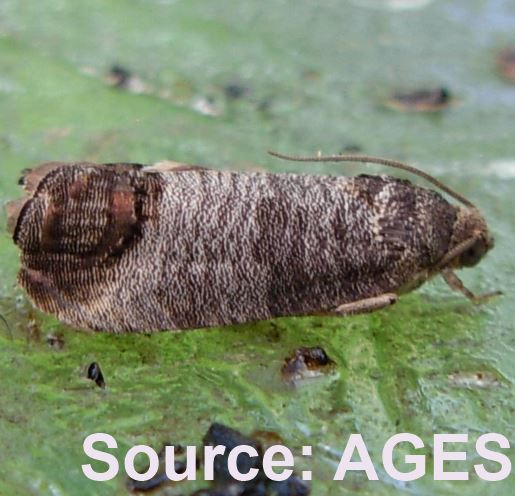
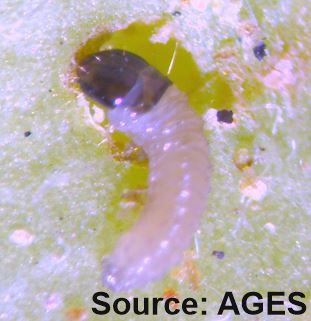
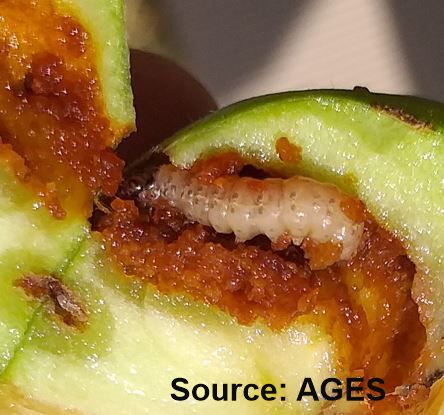
is the major insect pest of pome fruits (apple, pear and quince) in temperate areas worldwide causing infestations of up to 100% in untreated orchards, with two annual generations in Austria. Damages are caused to the fruits by feeding of the larvae of the 1st and the 2nd generation.
The plum fruit moth:
is considered the most important insect pest in plum cultivation worldwide, with up to three generations per year in Austria and causing damage up to 85% of the fruits in the 1st summer generation.
The European corn borer:
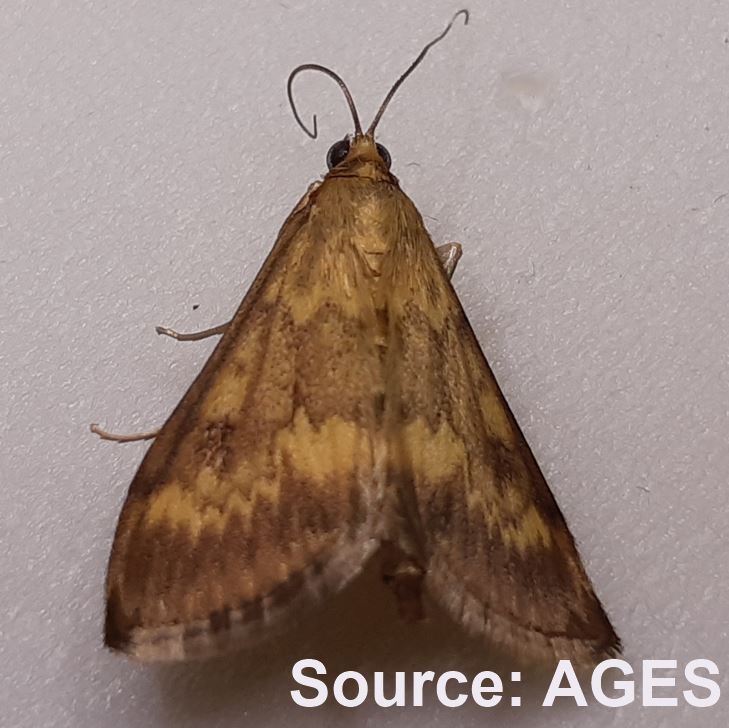
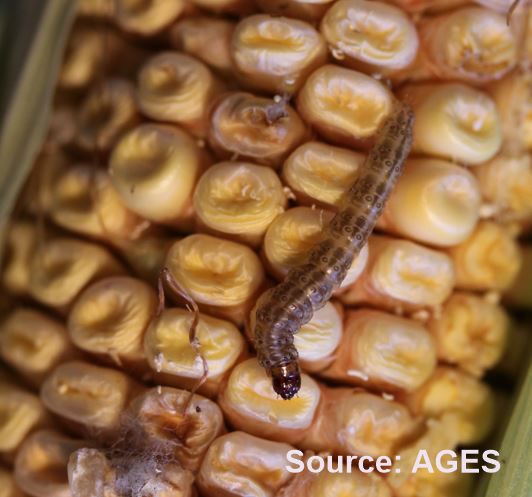
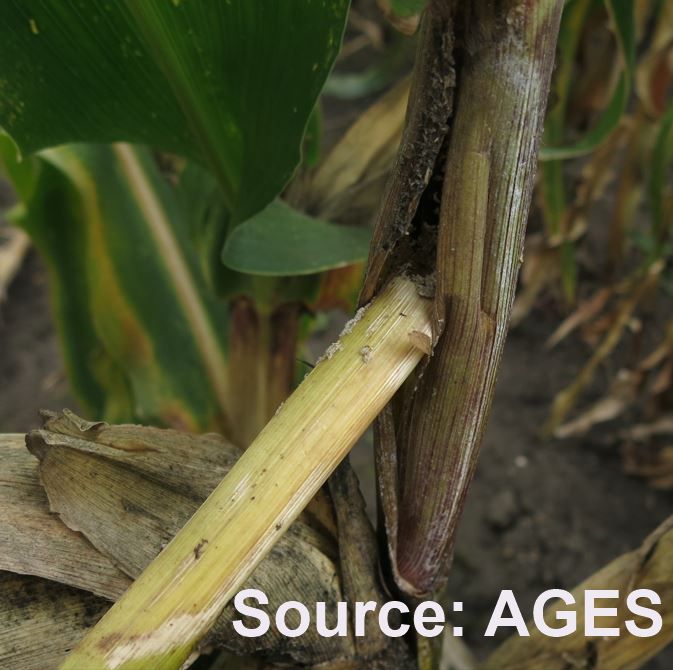
is one of the most devastating insect pests of maize causing yield losses of 4% worldwide and 10 - 30% in heavily infested areas and promoting additional secondary fungal infestations (e.g. Fusarium sp.). Besides maize this multi-voltine pest can damage several other host plants, such as hemp, millet, peppers, apples or peaches, especially in hot and dry summers.
The soil dwelling grubs of the Common European cockchafer:

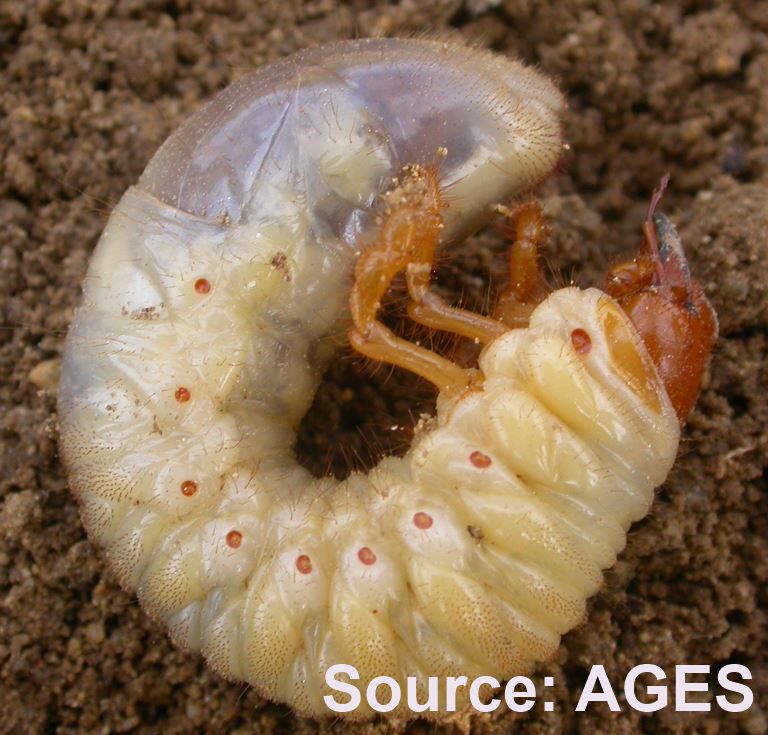
can cause severe damage to plant roots in orchards, vineyards and grassland, as observed in Austria over the past years. In irregular intervals mass flights of cockchafer occur, which do not exactly coincide with the biological long-term developmental cycles and are probably related to changing climatic conditions.
The Western corn root worm:
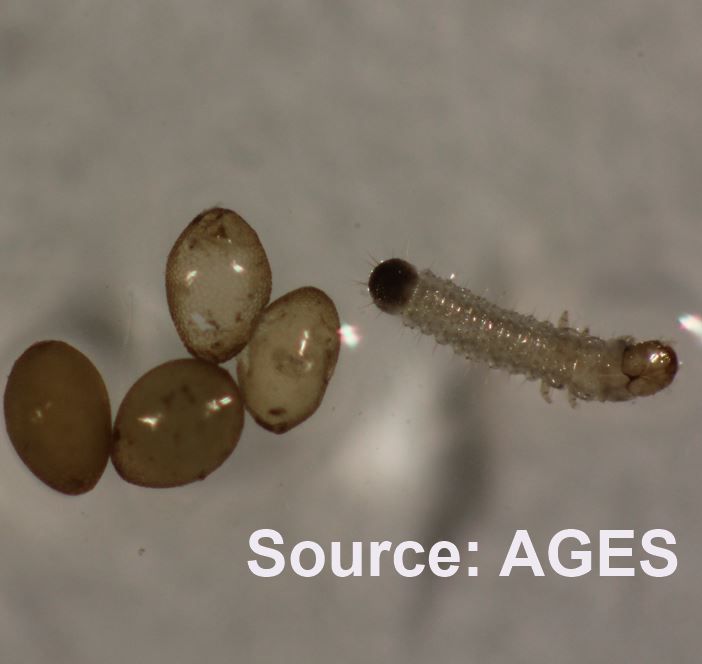

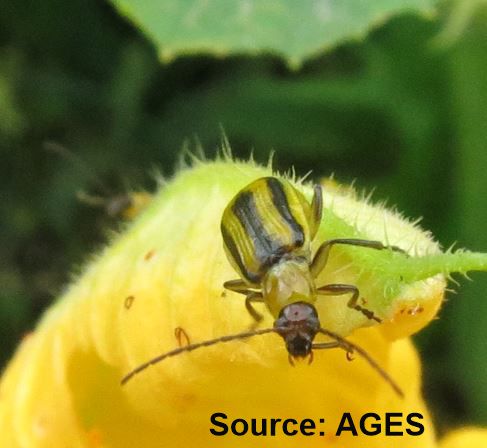
belongs to the most important introduced maize pests in Europe and in Austria since the 1980s, meanwhile infesting almost all Austrian maize cultivation regions. Due to the growing economic importance of maize in Austrian agriculture (e.g. feed production), maize shares in crop rotations were increasing partly to critical levels in some regions.
Wireworms (the soil dwelling larvae of click beetles):

can cause severe damages in various crops, but especially in potatoes and maize. Recently, the wireworm damage pressure has raised dramatically in many European countries, which was attributed to the lack of efficient persistent soil pesticides, reduced soil management and climate change.
The cotton bollworm:
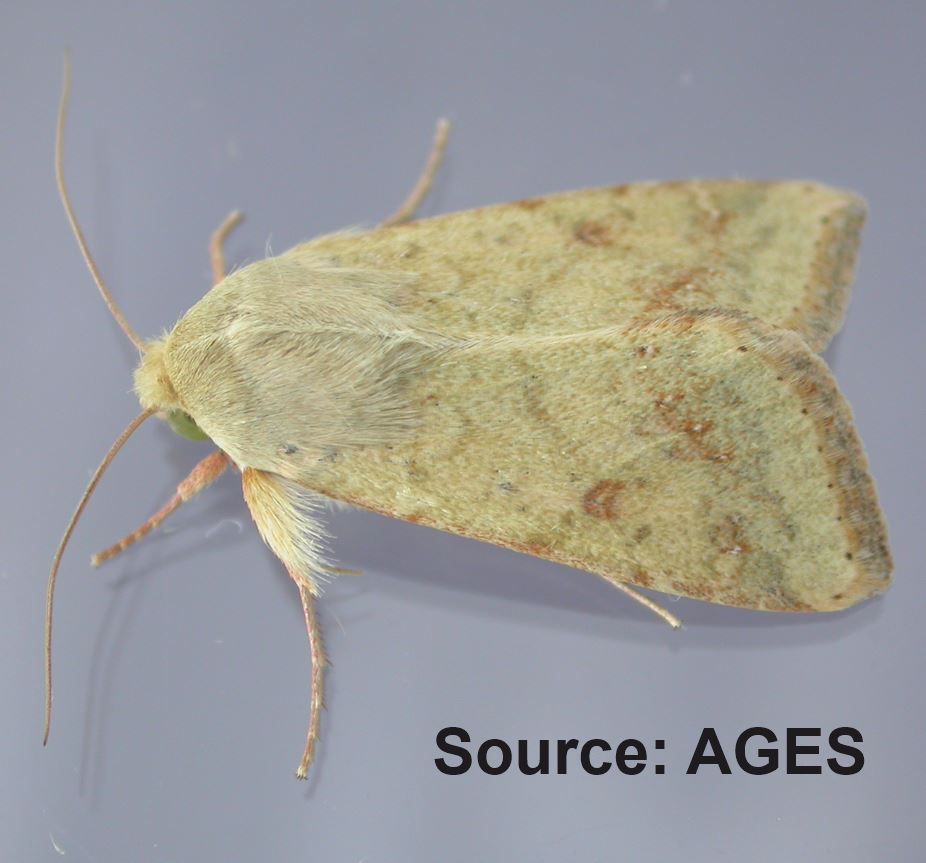

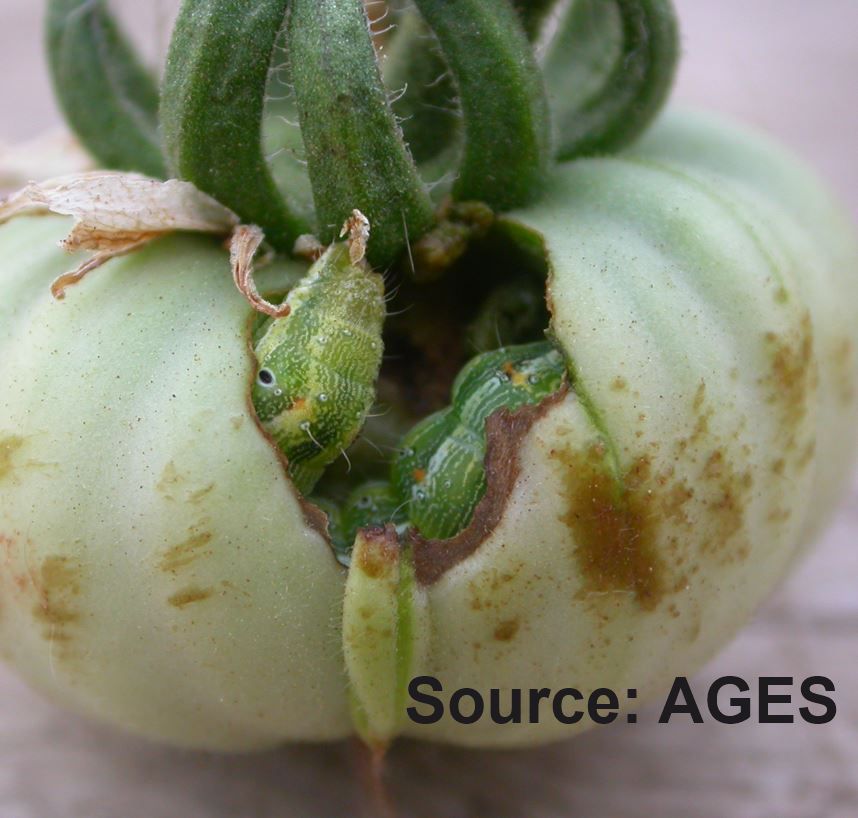
is a new spreading pest in Austria of high economic importance on a wide range of host plants world-wide, causing crop losses up to 100% due to its mobility, polyphagy, rapid and high reproductive rate. Estimated loss in crop productivity in Asia, Europe, Africa and Australasia exceeds 2 Billion USD annually. In Austria it is mainly damaging maize, Solanaceae, common bean and vegetables such as green artichoke and lettuce.
Aphids:


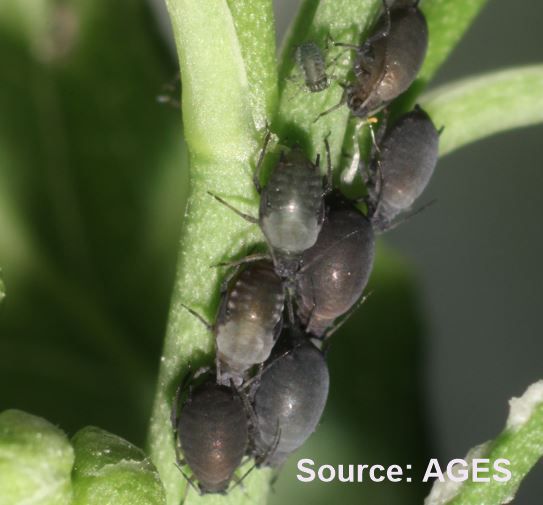
The target aphid species belong to the most important vectors of plant Nanoviruses such as the Pea necrotic yellow dwarf virus (PNYDV) in various legume crops, causing severe yield losses mainly in peas, faba beans, lentils and chickpeas in 2016 and 2018 in Austria.